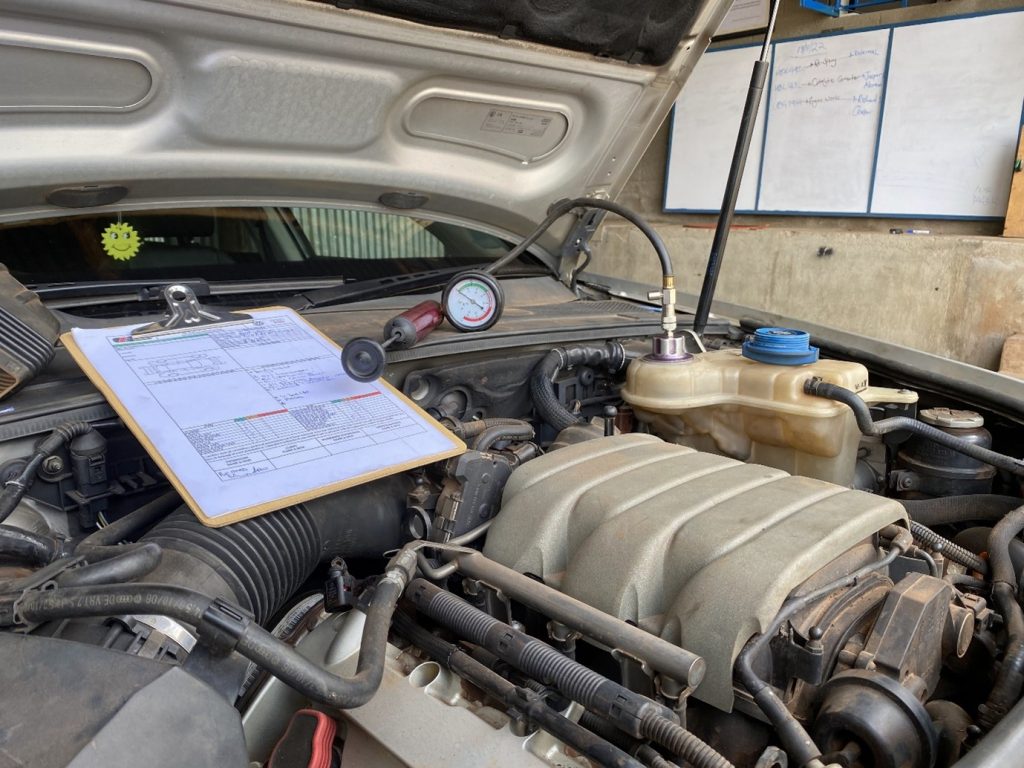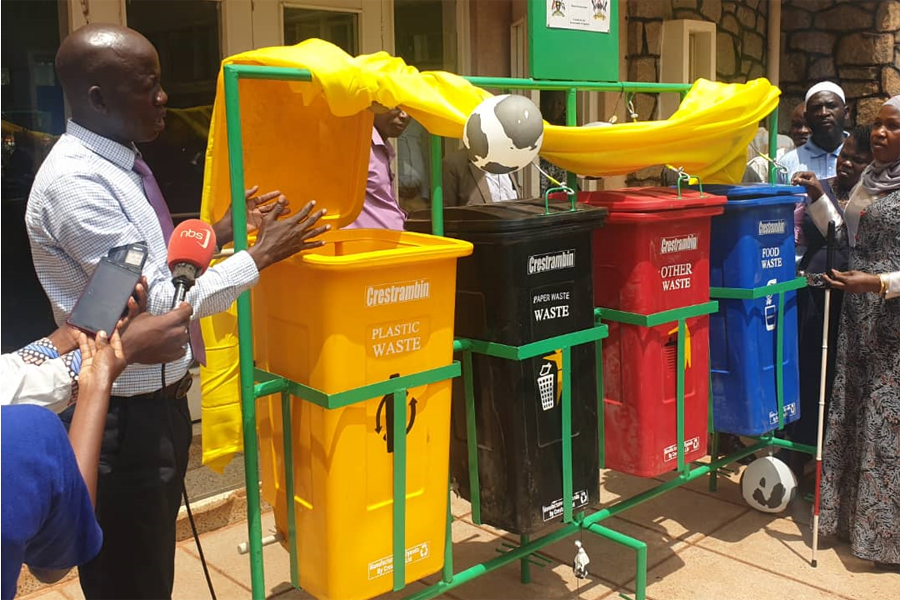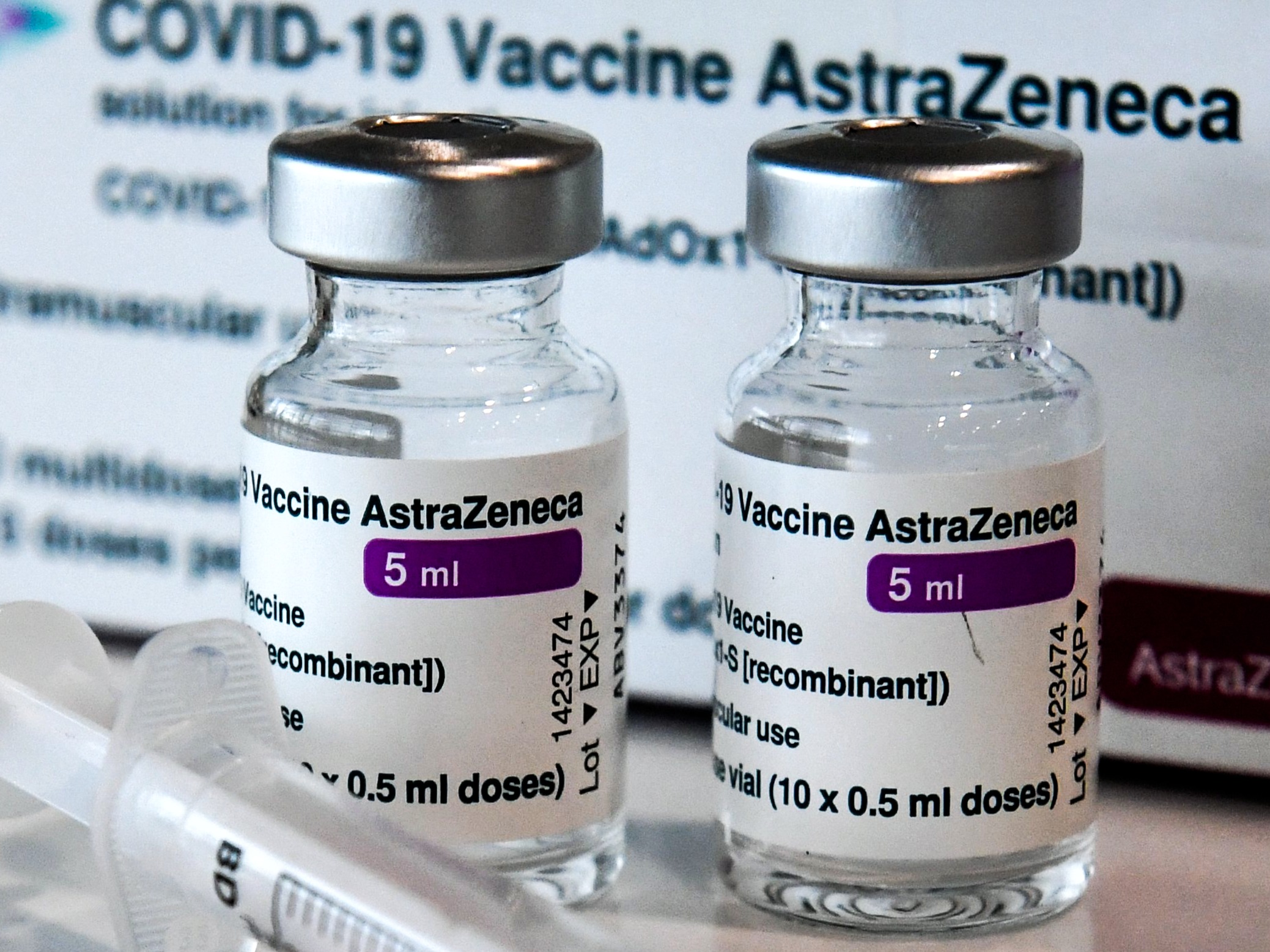Can I add coolant to an overheating engine?

By Okello Samuel
Adding coolant to a cold engine is always less risky. But what if you discover the engine is overheating as you drive due to low coolant? Sure, you need to stop and top off the coolant.
Keep Reading
However, the engine should be very hot at this stage, especially if you’ve been driving for a long time. Like yourself, many others are also asking, can I add coolant to a hot engine?
Can I add coolant to a hot engine?
No, you shouldn’t add coolant to a hot engine. Note that, it’s not possible to fill the coolant/antifreeze reservoir at this stage. Why? First, topping off your coolant reservoir requires you to remove the radiator cap. At this point, the cap will be hot, just like the overheating engine; touching it can burn your hand.
Secondly, your car’s cooling system is always pressurized and would boil out hot coolant if the cap is opened. So, even if you use a rag to hold the cap so you don’t get burnt, the pressure inside the reservoir can cause hot coolant or steam to spill out, inflicting severe burns. In cars like race cars, it will even explode.

Thirdly, engines react to temperature changes. So topping off coolant while the engine is hot can cause cracks and warps in your engine blocks and cylinder heads due to sudden temperature changes. What happens is that as cold coolant touches the engine, the hot metal contracts quickly. And eventually leading to engine damage. You may also notice white smoke from the engine.
While overheating can result in cracking and warping of engine blocks and cylinder heads, rapid cooling worsens it. To understand better, try putting a hot drinking glass in cold water; what happens to that glass is exactly what happens to your engine.
For these reasons, you should wait before adding coolant to your car unless you have money to unnecessarily throw around. So how long should you wait?
How long to let the engine cool before adding coolant?
It could take 20 minutes to 45 minutes for the engine to cool before adding coolant. However, the exact duration would depend on how long you’ve been driving, at what speed, and weather conditions.
If you had only gone on a short trip and drove at moderate speed, your engine shouldn’t be too hot. So 20 – 30 minutes should be enough to cool your engine. This time could even be shortened if the weather is cold as cars take longer to cool down during hot sunny days. However, your car should be very hot if you’ve been driving for long and at high speed.
Here, you would need to let the car sit for at least 45 minutes, though it might cool faster than expected during the cold months.

While it’s advisable to wait for some time, it doesn’t necessarily mean you have to wait till your engine is cold. So you may want to ask if you can put coolant in a warm engine. Yes, you can.
However, if you choose to fill coolant into a warm engine, do so slowly with your engine running. This way, the cold liquids meet with the hot liquid already circulating in the system instead of entering the system at once.
How to add coolant to a car
Topping off coolant may look like an easy job to do. However, you might cause catastrophic engine damage if care is not taken. So to fill the coolant reservoir, here are safe steps to take.
- Get your manufacturer-recommended coolant and safety wear like hand gloves.
- Switch off your engine and put your car in Park or neutral.
- Allow it to sit for about 20 mins – 45 mins so it can cool down.
- Check the hood to see if it’s cool enough to touch; avoid adding coolant to a hot car.
- Partially unscrew the coolant reservoir cap but don’t take off the cap. This should let the pressure inside subside if it’s still high. Step back a bit when doing this.
- Now remove the filler cap.
- Pour in coolant but ensure you don’t overfill. Overfilling will let extra fluid expand and flow out of the overflow pipe. While this might not necessarily harm your engine, it could be dangerous to children and animals as coolant is acidic. In addition, coolant has a sweet smell, and animals or kids might be tempted to taste it.
- Replace the filler cap, and ensure you tighten it properly to avoid coolant spilling out.
Can I drive right after adding coolant?
You shouldn’t drive immediately after refilling the coolant in the car. Here is what to do. Switch on your car’s engine and let it idle. Then check your temperature gauge on your car’s dashboard to see if the temperature is normal. If now in average operating temperature, you can drive.

But still, keep observing the temperature.
This is also an avenue to check for coolant leakage under your car. If you’re experiencing fluid leaks, it won’t be long before your coolant goes down again and the car starts overheating. So try figuring out the problem, or take your car to a mechanic to check and possibly fix it.
True, coolant could get low maybe after 30k miles or so since coolant contains water that can evaporate. If you regularly commute in a hot climate, you may also need to top off coolant often. However, you shouldn’t be filling coolant now and then. If you’re doing this too often, there is probably coolant leaking somewhere which could be due to a faulty radiator or water pump.
Can I add coolant while engine is running?
Ideally, your engine should be turned off when filling coolant for safety purposes. However, you may need to run your engine while adding coolant.
If the engine is cold, you don’t need to keep the engine running. However, coolant will not flow appropriately since the thermostat is closed, so you can fill it up and start your engine. This allows the car to heat up a bit for the thermostat to open and allow fluid to pass through it.
But suppose the engine is hot and you still choose to add coolant, keep the engine running during coolant refill to avoid thermal shock leading to cracks or warps. Usually, cast iron heads crack while aluminum warps. However, this is when you’re topping off.
If, however, your coolant reservoir is empty and your engine is overheating, allow the engine to cool. Except you choose to add coolant slowly with the top hose disconnected to avoid backflow of fluid. But even then, the blocks may be too hot for coolant and cause cracks.
OKELLO SAMUEL
B.Eng. Automotive and Power Engineering
Technical Director
S-Line Motors LTD
Plot 6, Ojara Close, Mbuya
https://goo.gl/maps/bEGeVEN7tUVTqHnu8
0779745722 / 0708000888













